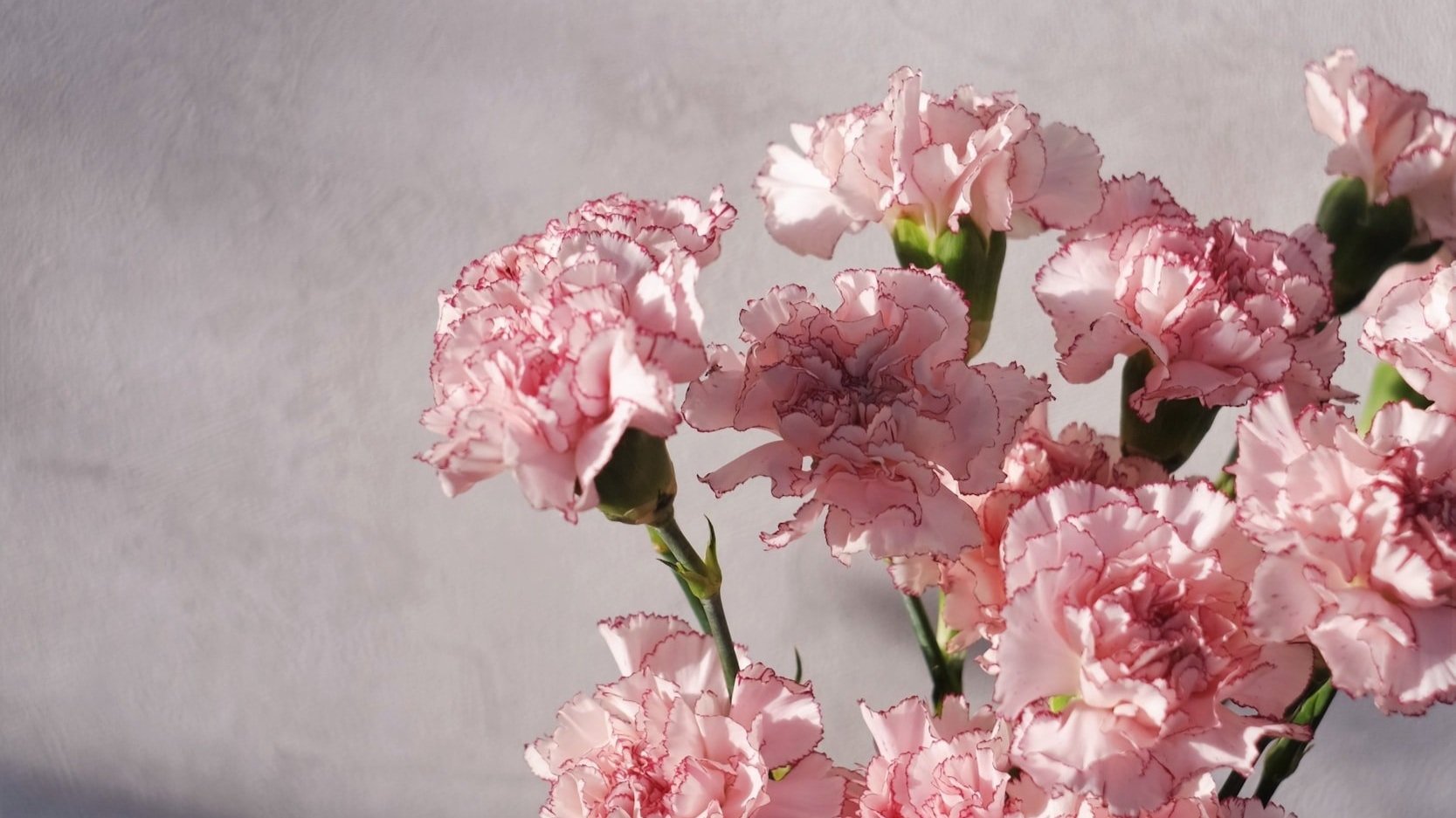On Carnations
Today’s carnations are not your momma’s carnations. And neither is the way we use them! While still commonly found in inexpensive designs, these traditional flowers are getting a whole new life in the high-end floral industry. No longer are they the dated, cheap, overdone staple that may come to mind - and I am here for it.
The stigma brought by carnations is fairly recent. Luxury shop owners turning up their noses to them can be blamed on their overuse in tele-flora operations. What is tele-flora you ask? Have you ever googled “flower shop” and every website offers the same, sunflower, baby’s breath, hydrangea drenched arrangements, coincidentally via the same EXACT photograph? The market is saturated with these offerings, driven by convenience, and the consumers demand to receive an exact replica of what is advertised.
Being that the main design element is entirely a natural product and thus varies as nature itself does, this makes it incredibly difficult to participate in when working with local (and even imported) material. It has been important for higher-end designers to differentiate themselves from this type of product to save their creative liberties from consumer expectation.
They continue to be one of the longest lasting blooms in a florists’ repertoire. They are typically available any time of the year. They also come in an immense amount of natural and dyed color options, which leads me into the more modern applications of this tried-and-true classic.
With the technology of flower dying en masse, carnations have been engineered to be electric, tie-dye, dynamic and unreal, and simply irresistible. They are the pantone of flowers. In tandem with the demand for elaborate wedding archways and installations (Instagram Era, amirite?) we florists NEED an option that delivers in every possible color, in bulk, any time of the year, and for a good price.
Frugality is the friend of innovation.
Perhaps its millennials refusing to buy into the luxury branding of the past (or their inherent need to pinch pennies), but the loosening of the allowance on florists, especially high-end, creative designers, to use carnations. And might is peak for everyone when I say, THANK YOU. SO when your florist offers you the option, choose the carnation. It's better for your budget* and you won’t regret opening the door to a designer’s creativity, which she can access without shame or unintentionally re-branding herself as something other than luxury and deserving of high-end event business.
*All fresh cut flowers are expensive, and the work of your designer is not devalued based on your choice of flower!

